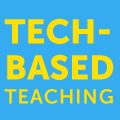Accessible Is Possible: All about Alt Text
Welcome to “Accessible Is Possible,” a series of tech tips to help you make learning more accessible for your students. Today will be a brief look at alt text, including what it is, how to use it and best practices.
What Is Alt Text?
Alt text, the short way of writing “alternative text,” describes an image. For example, an image of a flower might have “Flower” or even “Red flower in clear glass vase” as its alt text. Alt text is vital for readers who use text-to-speech, as without alt text, images are left undescribed.
Alt text isn’t just for screen readers, however. It gives search engines a better idea of a site’s content, which can boost pages on search rankings. It also provides readers with bad internet connections an idea of what images depict even if a page fails to load.
Why Use Alt Text?
Alt text makes images accessible to blind and low-vision readers. Without it, a screen reader would just say “Image” or something equally vague, leaving those readers without context. Given how image-heavy the internet can be, alt text is necessary!
The digital divide is another reason for alt text, as broken sites or pages that won’t load due to poor bandwidth can still be navigated if images have alt text. Many times, a site might load just enough to show text, even with bad internet. For students doing remote or virtual learning, alt text helps equalize access to media-rich lessons or email newsletters.
Where to Find Alt Text Editors
Alt text editors can be found in all sorts of programs, from word processors to websites to social media. If you share content on a learning management system, check the settings when you upload images; there’s likely an option to add alt text. Likewise, social media platforms may provide alt text fields, though they can be hidden. (For example, third-party tools don’t always give alt text options.)
Both Google and Microsoft have alt text options in their word processing and mail tools. For example, you can add alt text to an email in Outlook — and the Accessibility Checker will remind you to do so if you’ve forgotten! Google doesn’t have a built-in checker, although there are extensions you can try.
Ultimately, as each platform has its alt text editor stored in a different place, it’s worth searching for “alt text” and your tool of choice to see what guides you can find.
How to Write Alt Text
Once you’ve found the alt text editor, then what?
Some best practices to keep in mind include making sure that your alt text isn’t repeating what’s in the actual text, accurately describing the image without unnecessary detail and making sure to not use words like “image” or “picture.”
A screen reader will pick up redundancies. Adding a paragraph of information later shared beneath an image in the alt text will result in those screen readers saying the same thing twice. Likewise, a screen reader will say “Image” or “Graphic” to provide a cue for the alt text, so writing “Image of…” in alt text will sound like “Image of image of…”!
Example alt text for the above image might be something like, “Wolf howling in the snow.” Note the verb, which makes things clearer than just “Wolf.” How might you describe an image to your students if it didn’t load during a live lesson?
There’s no need to get whimsical — although some alt text might use evocative language if it’s deemed necessary, such as with a meme. Ultimately, you want to write a short, accurate description that provides objective context. You can even use a screen reader to listen to your alt text and make sure it makes sense.
Further Resources
Want to explore further?
- WebAIM’s guide to alt text gives solid examples and expands upon the whys and hows of alt text for accessibility.
- This blog post from ACES: The Society for Editing provides alt text setup on different platforms and gives examples of best practices.
- This Shopify blog post considers why you might want to describe race in alt text.
- This page on digital accessibility from Harvard University gives alt text examples in a teaching setting and directs readers to even more resources.
Jesika Brooks
Jesika Brooks is an editor and bookworm with a Master of Library and Information Science degree. She works in the field of higher education as an educational technology librarian, assisting with everything from setting up Learning Management Systems to teaching students how to use edtech tools. A lifelong learner herself, she has always been fascinated by the intersection of education and technology. She edits the Tech-Based Teaching blog (and always wants to hear from new voices!).

